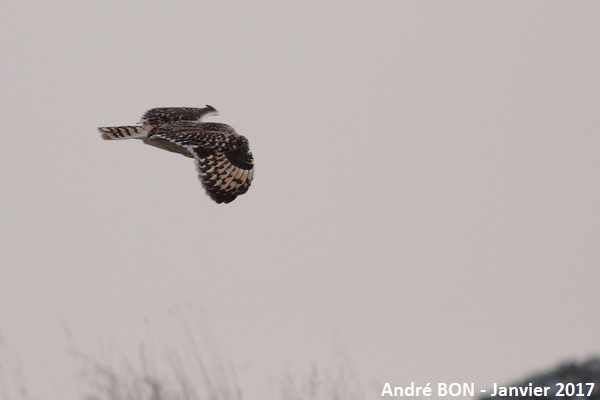
| Short-eared Owl (Asio flammeus (Pontoppidan, 1763)) |

|
|
Scientific name: Asio flammeus (Pontoppidan, 1763) Common name: Short-eared Owl French name: Hibou des marais Order: Strigiformes Family: Strigidae Size: Body size: 34 to 43 cm; Weight: 290 to 350 g; Wingspan: 90 to 107 cm. Females are slightly larger than males. Habitat: Open habitats: Grassy meadows, cultivated areas, estuaries, tundras. Food: Small mammals and sometimes birds and insects. Nesting: The nest is a depression on the ground dug by the female and hidden in the dense vegetation. There is a clutch of 4 to 7 eggs between March and June. Migration: Partially migratory. Northern birds move southwards in winter. Geographic area: Worldwide. |
The Short-eared Owl shows buff-brown plumage streaked with black. Males are paler than females. The eyes are yellow, outlined with black and located in the centre of two whitish facial discs. The bill is black. There is no tuft of feathers on the ears but only a small crested area on the top of the head. The underside of the wing, visible in flight, is whitish in colour and has a characteristic black spot at the joint. Short-eared Owls are active at the very end of the day until shortly after sunrise. |
| [To know more about the Short-eared Owl] [Top] |

|
I went to Hâble d'Ault in order to make some ornithological observations. I was strongly disappointed by the place which seemed to me rather like a sanctuary for hunters. However, I still walked there cautiously for a few hours. It was while trying to approach a Common Kestrel that this Short-eared Owl, landed among tall grasses, flew away. Too bad it didn't turn hits head in my direction at the time of the photo :-(. That will be for another time... |